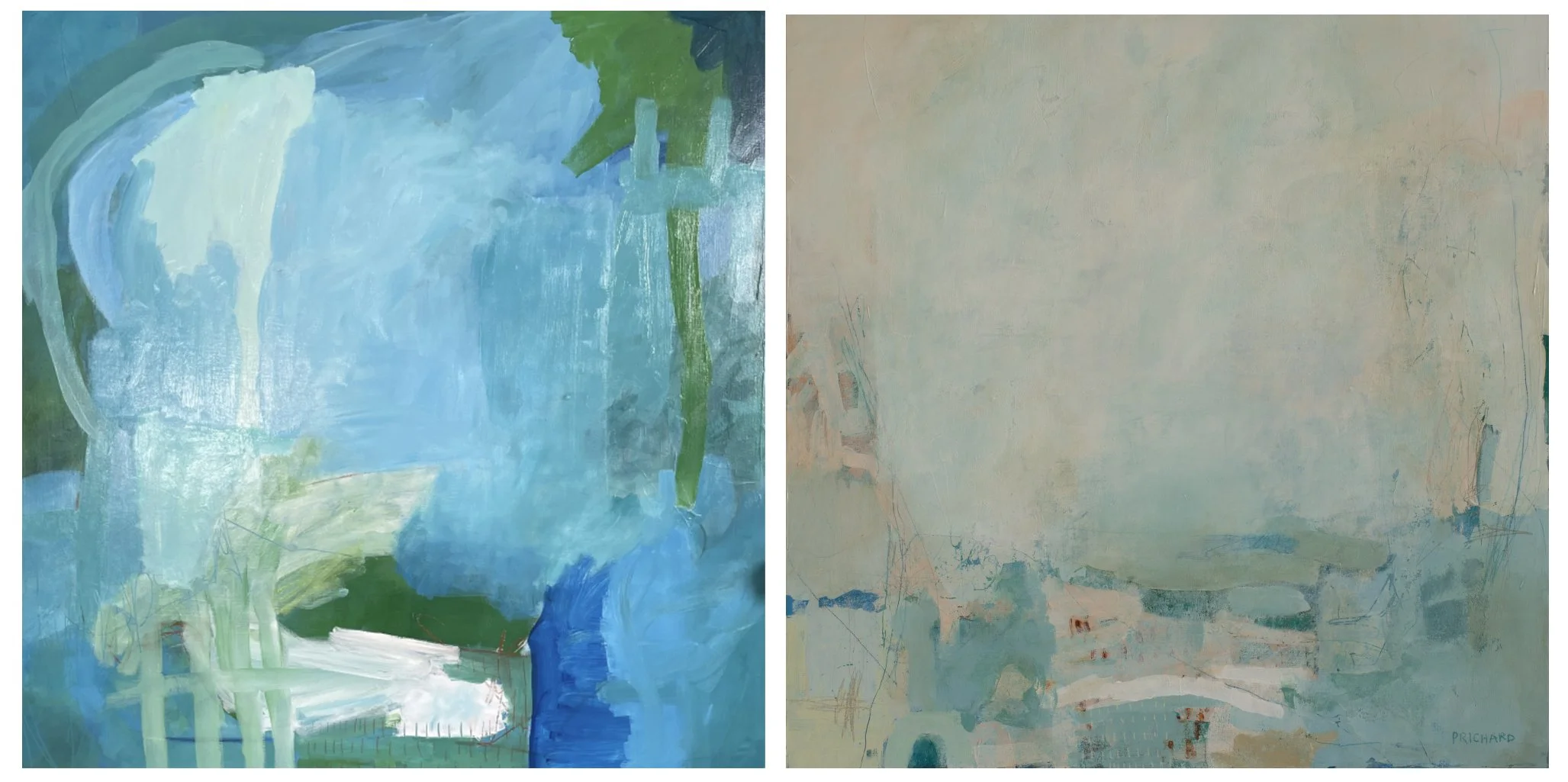Why I think Adding Complexity to Your Abstract Painting is Important.
There's an exhilarating freedom that comes with throwing caution to the wind and unleashing your creativity onto a canvas. It's a liberating experience where rules fade into the background, and imagination takes center stage. There are no wrong turns, only endless possibilities waiting to be explored. But what do you do when your painting looks like everybody else’s practice? How can you make sure that when collectors are looking at your work they don’t skip the purchase and instead state, “I can make that myself”?
This happened to me a lot when I was a beginning artist. My layering was simple, I used my paint straight from the tube and I latched on to every demo video I could get my hands on. I didn’t have my own creative voice, but that was OK. I was learning how to use paint and I was learning how to express myself.
On the left, the early stages of the painting. The completed painting on the right after adding layers, glazing and marks. “Said, Not Done”, SOLD
I then started to take apart the paintings that I liked to look deep inside them. I spent hours trying to figure out why I liked some art and not the rest. I looked deep into each section and broke out the differences from painting to painting. That is when I really started to up the complexity in my work. I found that by adding a few techniques to my process, I could make my art different from the painting next to it on the gallery wall. I could make more people want to purchase my art instead of just wanting to go home and make it.
These are three things that I think about while painting with regards to complexity:
Richness
Richness lies in the palette. I use materials with a high pigment load. More pigment vs. filler in acrylic paint, results in greater vibrancy. When there is a high pigment load, it is easier to mix color with high contrast. With this contrast, you can move the viewers eye around your painting and direct it towards your focal point.
Above: Layers of transparent and opaque pigments form this vibrant composition. Many layers of glaze emphasize the richness in the art. “Wine Country”, SOLD.
Depth and Texture
It goes without saying that when adding texture to a painting, you can generate depth. However, once the texture is there, you can use paint to add shadow and highlights in and around that texture to make it really stand out. On the other hand, painting over texture with one solid layer of color can help “calm” the texture or “push it back” in your painting when you feel like the texture is taking up too much of the viewers attention.
Another way to create depth is to make implied texture. Think of what you can do with a stencil and shadowing techniques strategically placed around it. By painting through a stencil one time and then painting through the same stencil a second time, slightly off-centered from the first layer, you can create the illusion of a raised stencil. Next overlay additional shapes on top of the first layer and continue to highlight and shadow those! The possibilities are limitless.
Glazing
The day I started working with glazing changed my art forever. Thin, sheer veils of color placed strategically on top of dried paint can shift color, age color, and increase depth. Glazing is the superstar of acrylic painting skills. I use glazing to create sheer shapes, blend out color shifts and even to make line. A slow drying glazing liquid is important for all of these techniques, which is why you will never see my studio without Golden Acrylic Glazing Medium. Carefully placed layers of glaze can produce a multi-dimensional space that invites exploration and leaves your viewer wondering, “How did they do that?”
Adding complexity in your artwork is a thoughtful process. By adding any of these techniques to your work, you are sure to enrich your canvas and invite the viewers to look inside the art longer.
Julie Prichard has been teaching complex abstract painting (acrylic) online since 2009. It is her passion to share her tecnnqieus while coaching you through her painting workshops, whenever you need help. To learn more about her latest workshop, The Abstracting Workshop, please click here.


